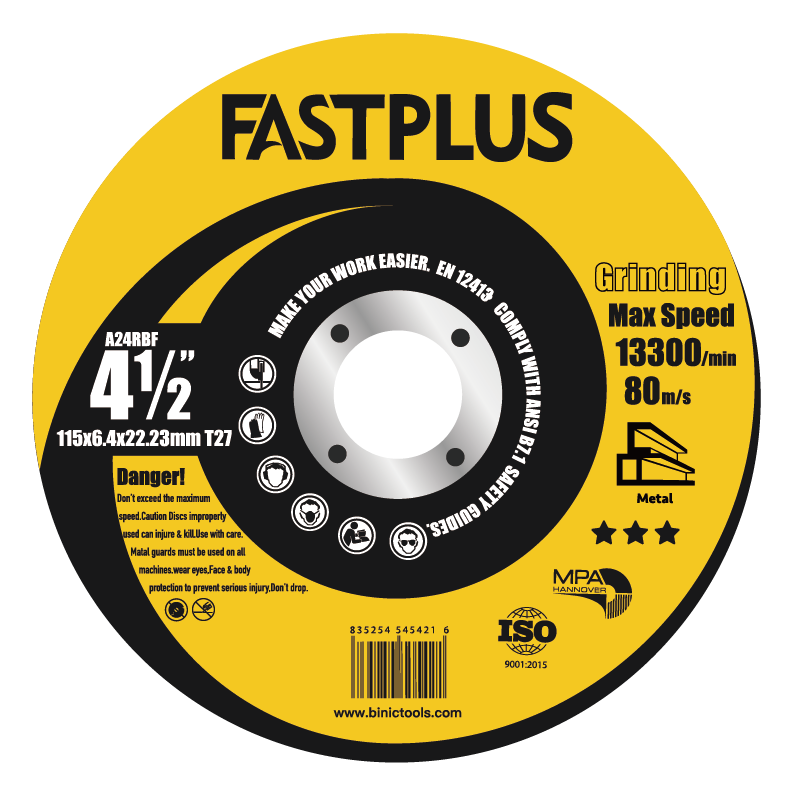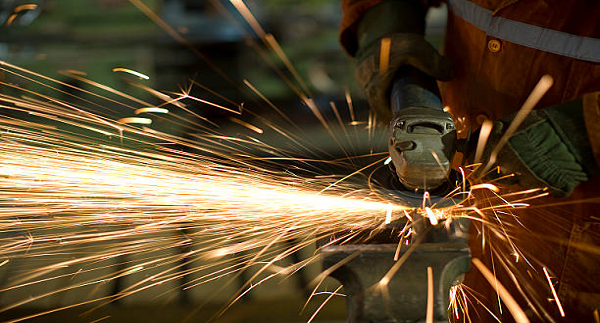When it comes to grinding wheels, professionals and hobbyists alike are faced with a multitude of choices. Every manufacturer promises superior performance, but how can one determine which grinding wheel truly outperforms another? In this article, we delve into the core aspects that differentiate one grinding wheel from another and explore the factors that drive a grinding wheel’s performance.
Understanding Grinding Wheels
A grinding wheel is a composite tool made of abrasive particles bonded together. These abrasive particles cut, shape, and smooth materials, ranging from metal and wood to concrete. But not all grinding wheels are created equal. Factors like abrasive type, bond material, grit size, and wheel structure play significant roles in their performance.
The question we aim to answer is: what makes one grinding wheel outperform another?
Factors That Affect Grinding Wheel Performance
Grinding wheel performance depends on various factors, including:
- Abrasive Type
- Grit Size
- Bonding Material
- Hardness Grade
- Wheel Density
- Wheel Shape and Size
- Test Environment and Conditions
Each of these factors directly influences a grinding wheel’s efficiency, durability, and precision in specific tasks.
1. Abrasive Type: Cutting Power and Versatility
The type of abrasive material in a grinding wheel defines its cutting performance. The most commonly used abrasives in grinding wheels are:
- Aluminum Oxide (A): This is the most popular abrasive for grinding ferrous metals, including carbon steel and stainless steel. It provides a good balance between toughness and cutting speed.
- Silicon Carbide (C): Known for its hardness, silicon carbide is typically used for softer metals like aluminum, cast iron, and non-metallic materials such as stone and rubber.
- Zirconia Alumina (ZA): This abrasive is more aggressive and durable than standard aluminum oxide, making it ideal for high-pressure grinding and heavy material removal.
- Ceramic Alumina (CA): This is the top-tier abrasive known for self-sharpening properties, making it extremely efficient for tough materials like stainless steel and aerospace alloys.
In competitor tests, wheels made from ceramic alumina often outperform their counterparts due to their longevity and ability to maintain sharpness over time.
2. Grit Size: Surface Finish vs. Material Removal Rate
Grit size determines the fineness or coarseness of the abrasive grains in the wheel, impacting the surface finish and material removal rate. Grit size typically ranges from very coarse (16-24 grit) to super fine (600 grit).
- Coarse Grit: A wheel with a lower grit number (coarse) will remove material quickly but leave a rougher surface.
- Fine Grit: A wheel with a higher grit number (fine) will remove less material per pass but produce a smoother finish.
In competitor tests, wheels with optimized grit combinations—such as those combining coarse grains for aggressive removal and finer grains for finishing—tend to outperform single-grit wheels. This versatility allows them to adapt to different grinding stages efficiently.
3. Bonding Material: Durability and Wear Resistance
The bond is the material that holds the abrasive grains together. The type of bond affects the wheel’s cutting behavior and its ability to withstand the heat generated during grinding. The most common bonding materials are:
- Vitrified Bond: Made of clay or glass-like materials, this bond is strong and resistant to heat, making it suitable for precision grinding applications.
- Resin Bond: Composed of synthetic resins, this bond is more flexible and used in applications requiring high-speed grinding or heavy material removal.
In competitor tests, vitrified bonds generally outperform resin bonds in terms of longevity and heat resistance, while resin-bonded wheels offer better performance in more aggressive, high-speed applications. Wheels with advanced bonding technology that optimize grain retention and wheel strength tend to perform better overall.
4. Hardness Grade: Wear and Material Compatibility
Grinding wheels are available in different hardness grades, typically labeled from A (soft) to Z (hard). The hardness grade indicates the strength of the bond holding the abrasive grains together.
- Soft Wheels: These are more prone to wear but cut faster and are ideal for harder materials, where quick grain shedding keeps the wheel sharp.
- Hard Wheels: These wear more slowly, maintaining their shape for a longer time, and are best suited for softer materials.
The right hardness grade for a specific application is crucial. Competitor tests show that wheels balanced between fast cutting action and controlled wear tend to outperform others, as they provide both efficiency and durability over extended use.
5. Wheel Density: Efficiency in Cutting
The structure or density of the grinding wheel, which refers to the spacing between the abrasive grains, also impacts performance. Wheels can be:
- Open Structure: Wheels with more space between the grains (open structure) are useful for soft materials, allowing debris and heat to escape more easily.
- Dense Structure: Wheels with closely packed grains (dense structure) offer better precision and are ideal for harder materials.
Competitor tests often reveal that wheels with open structures tend to last longer when cutting softer materials since they prevent clogging and overheating. Meanwhile, dense-structured wheels dominate in high-precision tasks requiring fine surface finishes.
6. Wheel Shape and Size: Application-Specific Efficiency
Grinding wheels come in various shapes and sizes depending on the application:
- Straight Wheels: The most common shape, used for cylindrical, surface, and centerless grinding.
- Tapered Wheels: These are used for grinding thread or gear teeth.
- Cup Wheels: Typically used for heavy-duty grinding of concrete or stone.
The wheel’s size and shape should match the task to ensure optimal performance. In competitor tests, wheels designed for specific tasks (e.g., cutting metal pipes vs. grinding surfaces) outperform general-purpose wheels due to their tailored design for efficiency and durability.
7. Test Environment and Conditions
In competitive tests, real-world variables play a critical role in determining a grinding wheel’s performance. These include:
- Cutting Speed: The speed at which the wheel operates can influence the rate of material removal and the generation of heat.
- Pressure Applied: High pressure can increase the rate of wear, while low pressure might reduce cutting speed.
- Material Type: The hardness, toughness, and composition of the material being ground directly impact wheel performance.
Competitor tests performed under controlled conditions, with consistent material, pressure, and cutting speed, offer a more accurate measure of each wheel’s performance. Performance testing under diverse real-world conditions, such as varying materials or pressure settings, provides insights into a wheel’s versatility and overall reliability.
The Results: What Sets High-Performing Grinding Wheels Apart?
Based on competitor testing of grinding wheels from leading brands, including Norton, PFERD, 3M, and Tyrolit, a few clear patterns emerge:
- Ceramic Abrasives Dominate: Wheels using ceramic alumina abrasives consistently outperform those with standard aluminum oxide or silicon carbide, particularly in terms of longevity and sustained cutting speed.
- Optimized Grit and Bond Combinations Matter: Grinding wheels with a mix of coarse and fine grains, supported by vitrified or advanced bonding systems, strike the perfect balance between aggressive material removal and surface finish, making them stand out in competitive tests.
- Application-Specific Design: Wheels designed for specific tasks, such as cup wheels for stone grinding or fine-grit wheels for precision metalwork, far outshine general-purpose wheels. Customization to the task at hand proves key to performance.
- Durability in High-Heat Situations: Wheels that incorporate heat-resistant bonds and open structures manage heat build-up better, maintaining their sharpness longer in high-friction tasks.
Conclusion: How to Choose the Right Grinding Wheel
Competitor tests reveal that no single grinding wheel fits every application. High-performing grinding wheels are those that balance the right abrasive type, grit size, bonding material, and wheel structure for the specific task at hand.
For industrial applications, ceramic-based wheels offer unmatched durability and cutting efficiency. For heavy-duty grinding, wheels with a vitrified bond and open structure provide longevity and heat management. Finally, always match the wheel shape and size to the material and operation to maximize efficiency.
In the end, a grinding wheel’s performance depends on its composition, intended application, and real-world conditions.

